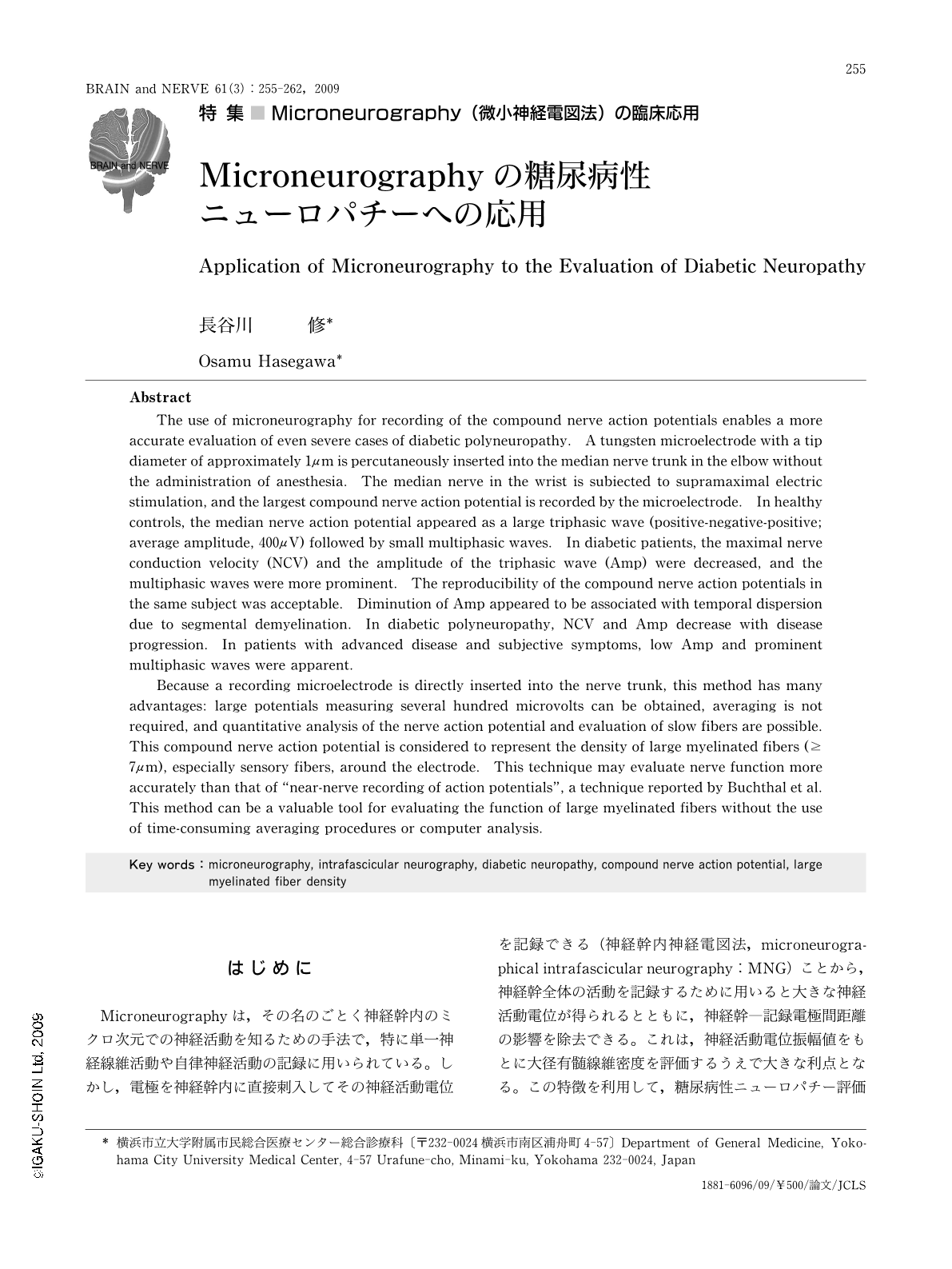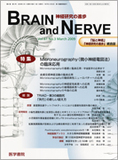Japanese
English
- 有料閲覧
- Abstract 文献概要
- 1ページ目 Look Inside
- 参考文献 Reference
はじめに
Microneurographyは,その名のごとく神経幹内のミクロ次元での神経活動を知るための手法で,特に単一神経線維活動や自律神経活動の記録に用いられている。しかし,電極を神経幹内に直接刺入してその神経活動電位を記録できる(神経幹内神経電図法,microneurographical intrafascicular neurography:MNG)ことから,神経幹全体の活動を記録するために用いると大きな神経活動電位が得られるとともに,神経幹―記録電極間距離の影響を除去できる。これは,神経活動電位振幅値をもとに大径有髄線維密度を評価するうえで大きな利点となる。この特徴を利用して,糖尿病性ニューロパチー評価への応用について述べる。
Abstract
The use of microneurography for recording of the compound nerve action potentials enables a more accurate evaluation of even severe cases of diabetic polyneuropathy. A tungsten microelectrode with a tip diameter of approximately 1μm is percutaneously inserted into the median nerve trunk in the elbow without the administration of anesthesia. The median nerve in the wrist is subiected to supramaximal electric stimulation, and the largest compound nerve action potential is recorded by the microelectrode. In healthy controls, the median nerve action potential appeared as a large triphasic wave (positive-negative-positive; average amplitude, 400μV) followed by small multiphasic waves. In diabetic patients, the maximal nerve conduction velocity (NCV) and the amplitude of the triphasic wave (Amp) were decreased, and the multiphasic waves were more prominent. The reproducibility of the compound nerve action potentials in the same subject was acceptable. Diminution of Amp appeared to be associated with temporal dispersion due to segmental demyelination. In diabetic polyneuropathy, NCV and Amp decrease with disease progression. In patients with advanced disease and subjective symptoms, low Amp and prominent multiphasic waves were apparent.
Because a recording microelectrode is directly inserted into the nerve trunk,this method has many advantages: large potentials measuring several hundred microvolts can be obtained,averaging is not required,and quantitative analysis of the nerve action potential and evaluation of slow fibers are possible. This compound nerve action potential is considered to represent the density of large myelinated fibers (≧ 7μm),especially sensory fibers,around the electrode. This technique may evaluate nerve function more accurately than that of "near-nerve recording of action potentials",a technique reported by Buchthal et al. This method can be a valuable tool for evaluating the function of large myelinated fibers without the use of time-consuming averaging procedures or computer analysis.

Copyright © 2009, Igaku-Shoin Ltd. All rights reserved.


